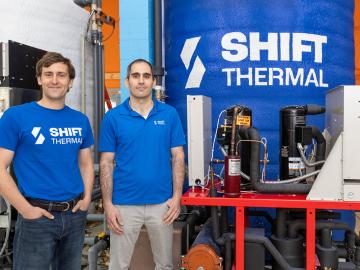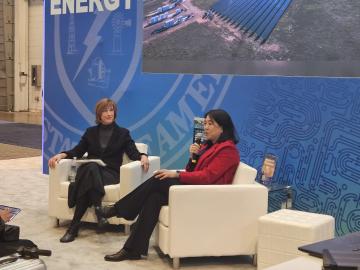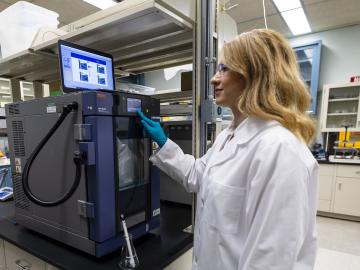
Filter News
Area of Research
News Type
News Topics
- (-) Energy Storage (47)
- (-) Hydropower (6)
- 3-D Printing/Advanced Manufacturing (73)
- Advanced Reactors (17)
- Artificial Intelligence (85)
- Big Data (49)
- Bioenergy (74)
- Biology (86)
- Biomedical (46)
- Biotechnology (25)
- Buildings (37)
- Chemical Sciences (46)
- Clean Water (16)
- Composites (15)
- Computer Science (127)
- Coronavirus (23)
- Critical Materials (6)
- Cybersecurity (20)
- Education (2)
- Emergency (3)
- Environment (130)
- Exascale Computing (53)
- Fossil Energy (6)
- Frontier (47)
- Fusion (47)
- Grid (35)
- High-Performance Computing (92)
- Irradiation (1)
- Isotopes (41)
- ITER (5)
- Machine Learning (39)
- Materials (82)
- Materials Science (75)
- Mathematics (8)
- Mercury (7)
- Microelectronics (3)
- Microscopy (31)
- Molten Salt (3)
- Nanotechnology (29)
- National Security (67)
- Neutron Science (95)
- Nuclear Energy (79)
- Partnerships (42)
- Physics (40)
- Polymers (14)
- Quantum Computing (37)
- Quantum Science (52)
- Security (19)
- Simulation (46)
- Software (1)
- Space Exploration (14)
- Statistics (2)
- Summit (42)
- Transportation (41)
Media Contacts

ORNL researchers created and tested two methods for transforming coal into the scarce mineral graphite, which is used in batteries for electric vehicles.
Seven scientists affiliated with ORNL have been named Battelle Distinguished Inventors in recognition of being granted 14 or more United States patents. Since Battelle began managing ORNL in 2000, 104 ORNL researchers have reached this milestone.

Electrolytes that convert chemical to electrical energy underlie the search for new power sources with zero emissions. Among these new power sources are fuel cells that produce electricity.

At ORNL, a group of scientists used neutron scattering techniques to investigate a relatively new functional material called a Weyl semimetal. These Weyl fermions move very quickly in a material and can carry electrical charge at room temperature. Scientists think that Weyl semimetals, if used in future electronics, could allow electricity to flow more efficiently and enable more energy-efficient computers and other electronic devices.

ORNL's Guang Yang and Andrew Westover have been selected to join the first cohort of DOE’s Advanced Research Projects Agency-Energy Inspiring Generations of New Innovators to Impact Technologies in Energy 2024 program. The program supports early career scientists and engineers in their work to convert disruptive ideas into impactful energy technologies.

Shift Thermal, a member of Innovation Crossroads’ first cohort of fellows, is commercializing advanced ice thermal energy storage for HVAC, shifting the cooling process to be more sustainable, cost-effective and resilient. Shift Thermal wants to enable a lower-cost, more-efficient thermal energy storage method to provide long-duration resilient cooling when the electric grid is down.

Technology Transfer staff from Department of Energy’s Oak Ridge National Laboratory attended the 2024 Consumer Electronics Show, or CES, in Las Vegas, Jan. 8–12.

The 2023 top science achievements from HFIR and SNS feature a broad range of materials research published in high impact journals such as Nature and Advanced Materials.

In fiscal year 2023 — Oct. 1–Sept. 30, 2023 — Oak Ridge National Laboratory was awarded more than $8 million in technology maturation funding through the Department of Energy’s Technology Commercialization Fund, or TCF.

The common sounds in the background of daily life – like a refrigerator’s hum, an air conditioner’s whoosh and a heat pump’s buzz – often go unnoticed. These noises, however, are the heartbeat of a healthy building and integral for comfort and convenience.


